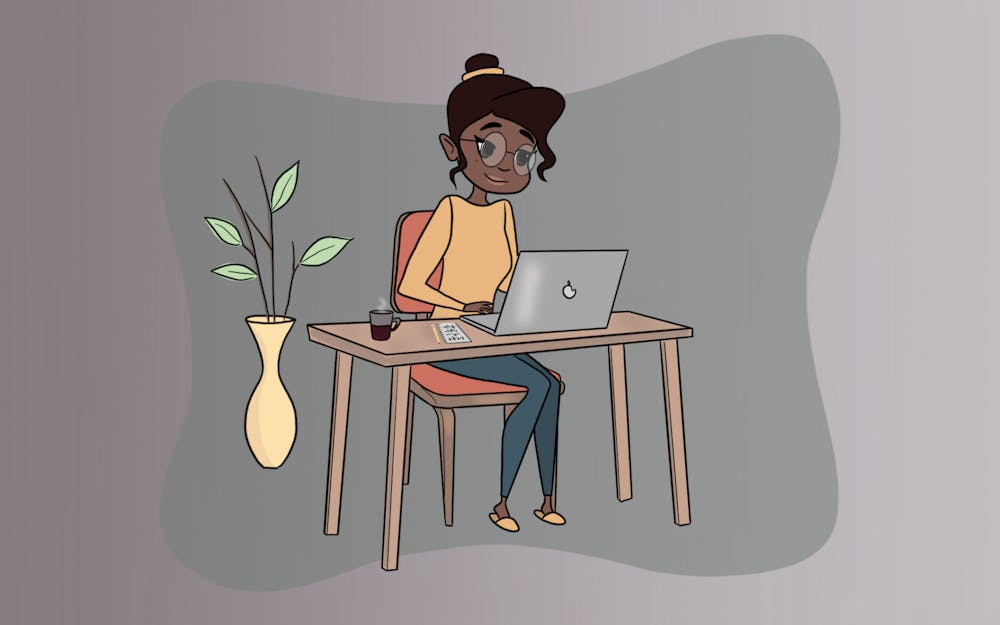As writers for the Black Voices desk at the Indiana Daily Student, journalists of color take on a lot of work that is important to recognize. Reporting the truth as well as advocating for all marginalized groups in a predominantly white profession is hard work.
Associate Professor Gerry Lanosga teaches journalism courses in the Media School at IU. Coming from a multiracial background, Lanosga attests to the struggles journalists of color face.
“Numbers of journalists of color are certainly low,” Lanosga said. “I have noticed that as a teacher to a distressing degree.”
Lanosga, who has been teaching since 2009, said he feels particularly sympathetic towards students of color who might feel alone in his classes. He said this problem extends beyond IU.
“I have had classes with only one student of color in it, and I’ve felt the weight of that isolation for them,” Lanosga said. “This is distressingly the case in many of our classrooms both in Bloomington and elsewhere.”
While Lanosga said he cannot recall facing blatant racism in the newsroom, he has had his fair share of experiences with white reporters not being able to pronounce his last name and being tokenized.
“I don't recall outright racism directed toward me in newsrooms,” Lanosga said. “Though there were occasional episodes such as the name-bungling or the idea that if there was a story involving brown people, I should be assigned to it.”
One thing I have felt about being a minority in a predominantly white state such as Indiana is the need to prove and establish myself to white people. I want them to take me seriously, and that means working as hard as I can. Lanosga can attest to this drive of external validation and proving oneself.
“I’ve definitely felt in the past and even sometimes now the need to prove myself and that I belong in the places I work,” Lanosga said. “Of course, everyone feels some of that. But some people feel it more acutely, and particularly if you don’t see other people like yourself around.”
A 2021 Zippia study reports that 70% of journalists are white. If we do not have diversity in the newsroom, can news regarding people of color and diverse issues be properly reported?
“One of the main charges of journalism is reflecting society upon itself,” Lanosga said. “You can’t do that if your representation among your reporting ranks is not reflective of the larger society.”
By not diversifying newsrooms, we limit the possibility of varying interpretations of news.
Related: [Black Voices: The 2022 Oscar nominations lack diversity]
“We have a real blind spot in American newsrooms,” Lanosga said. “You miss perspectives that are important, necessary, and marginalized if you don’t have that sort of representation in the newsroom.”
This leaves us to question whether or not it is fair for journalists of color to have to take on the duty of reporting the truth while also advocating for all marginalized groups of people. Lanosga said it can be unfair in some instances.
“You don’t always want to be the journalist of color who has to go do the diversity work,” Lanosga said. “It is an unfair burden that white journalists don't have to deal with because they don't always have that second burden of pushing forward diversity.”
However, as challenging as it may be, BIPOC journalists need to continue advocating for and increasing diversity in the newsroom and other workplaces. This doesn’t mean it is a burden we should face on our own. Those in management-level positions need to push for an increase in diversity as well.
“There's work to be done on all sides, but it can't just be put on journalists of color to be thinking about ‘How do we diversify and broaden our coverage?’” Lanosga said. “It should come from the top levels of newsrooms as well to understand the extra burdens that are placed on journalists of color.”
No matter how hard it can be to bear this burden, we are doing extremely important work for the future of the country. To diversify newsrooms is to diversify news as a whole.




